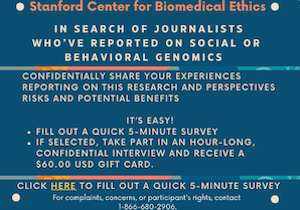The California Institute for Regenerative Medicine, launched in 2007 with $3 billion in public funding, has generated 42 therapies now in clinical trials for a variety of incurable diseases. Don Reed, a science writer and advocate for stem cell research, describes the program’s successes in California Cures: How the California Stem Cell Program is Fighting Your Incurable Disease.
Are you a journalist who was stopped for extra border screening or had your device searched at the U.S. border at any point in your career? CPJ and RSF have been working to understand the scope of the problems. Read more and report any cases thru June.


